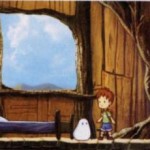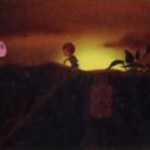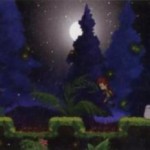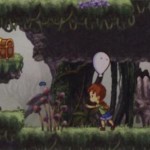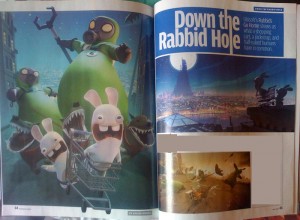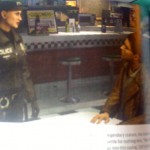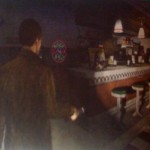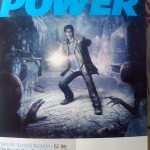Color your hero to success in Crayola Colorful Journey
Posted on 16 years ago by Brian(@NE_Brian) in News, Wii | 0 comments
Crave Entertainment Ships New Puzzle Adventure for WiiTM
Newport Beach, Calif.- April 1, 2009- Crave Entertainment, a leading publisher of console videogames, today announced it is shipping Crayola Colorful Journey for WiiTM. In Crayola Colorful Journey, players must use the creativity tools at hand to solve puzzles and help their character complete the quest. With no correct solutions, Crayola Colorful Journey encourages players to come up with imaginative ways to complete each puzzle.
“Crayola Colorful Journey offers an intriguing challenge for kids of all ages,” says David Burchi, Senior VP of Content and Strategic Development of Crave Entertainment. “With no ‘right’ way to solve each puzzle, players have to use their imaginations. No two solutions will be exactly the same, offering endless replayability and opportunities to try out different ideas.”
Japanese software sales (3/23 – 3/29)
Posted on 16 years ago by Brian(@NE_Brian) in DS, News, Wii | 1 Comment
01. [PSP] Mobile Suit Gundam: Senjou no Kizuna Portable (Namco Bandai) 85,000 / NEW
02. [PSP] Disgaea 2 (Nippon Ichi) 39,000 / NEW
03. [NDS] Yugioh 5D’s: Stardust Accelerator: World Championship 2009 (Konami) 37,000 / NEW
04. [NDS] Mario & Luigi RPG 3 (Nintendo) 36,000 / 464,000
05. [NDS] Super Robot Taisen K (Namco Bandai) 32,000 / 149,000
06. [PS2] Jikkyou Powerful Pro Yakyuu 2009 (Konami) 27,000 / 77,000
07. [PSP] Monster Hunter Portable 2 G (PSP the Best) (Capcom) 24,000 / 531,000
08. [PS3] Musou Orochi Z (KOEI) 21,000 / 169,000
09. [PS3] Resident Evil 5 (Capcom) 17,000 / 427,000
10. [NDS] Rittai Picross 3D (Nintendo) 16,000 / 78,000
Takt of Magic to release this May in Japan
Posted on 16 years ago by Brian(@NE_Brian) in News, Wii | 0 comments
– Control Orwell and Sharlot (childhood friends)
– Battle monsters, soldiers
– Hold Wiimote like a wand
– Draw shapes for magic
– Over 100 spells to execute
– Control battle party from overhead perspective
Hope for Japanese voices in North American release of Arc Rise Fantasia
Posted on 16 years ago by Brian(@NE_Brian) in News, Wii | 0 comments
“For Arc Rise Fantasia, as for all Japanese games with voice-acting that we work on, it usually depends on if the game disc can hold both the English and Japanese voice data (which can be huge), and if we are allowed to use the original voices in North America because a lot of times they only have the rights to be used for Japan. We always try, but it depends on these variables on if we can actually keep the original voices or not.” – Ken, XSEED
I hope that the English voice acting in Arc Rise Fantasia is halfway decent. I wouldn’t mind too much missing out on Japanese voiceovers, but it would be a nice addition.
This week’s Rock Band Music Store additions
Posted on 16 years ago by Brian(@NE_Brian) in News, Wii | 1 Comment
PEARL JAM’S DEBUT ALBUM TEN COMES TO THE WiiTM ROCK BAND® MUSIC STORE; NEW TRACKS FROM DEVO, FAITH NO MORE AND FALL OUT BOY ADDED TO Wii MUSIC STORE LINEUP
Cambridge, Mass. – March 31, 2009 – Harmonix and MTV Games announced today 14 new tracks coming this week to the Rock Band® Music Store catalogue of downloadable content for Wii™ home videogame console from Nintendo, including Pearl Jam’s debut album Ten. This week’s new music lineup also includes new wave band Devo, punk band Fall Out Boy and, the rap infused metal-edged stylings of Faith No More.
Ten, the 1991 album that introduced the world to Pearl Jam, will be released in its entirety for download in the Wii Rock Band® Music Store this week including popular hit “Jeremy” and hidden track “Master/Slave”. With the song “Alive” from Ten already featured on the Rock Band 2 soundtrack, the Rock Band Music Store will feature the other eleven tracks from the album. The Pearl Jam tracks were released to owners of Xbox 360® video game and entertainment system from Microsoft and PLAYSTATION®3 computer entertainment system last week.
First Silent Hill: Shattered Memories info
Posted on 16 years ago by Brian(@NE_Brian) in News, Wii | 2 Comments
These details come from the latest Nintendo Power…
– Characters play different roles
– Story taken in new directions
– Play as Harry Mason
– Use control stick to move Harry
– Searching for your daughter
– You’ll come across familiar elements but they’re not what you would expect
– Your answers have impact on how game plays out
– Will have less backtracking than in other Silent Hill games
– Can go through every locked door
– Use Wiimote to aim flashlight
– The Wii Remote is used to aim the flashlight
– No load times due to streaming environments
– Streaming environments that completely eliminate load times
– Wiimote used as cell phone, static noise comes out from Wiimote speaker
-The static noise comes out of the Wii Remote now. It also acts as your cell phone.
– No combat in the game – can only flee now instead
– Hold “Z” button to allow Harry to get a lead when a monster finds you
– Go through doors, climb over fences, jump through windows, barricade doors during getaway
– Static noise becomes louder as monsters approach
– Can look over your shoulder while running
– Chases aren’t quick-time events
– Monsters will attempt to thwart your escape by taking alternate routes, will also try to flank you
“In Silent Hill games, the town always gets inside the protagonist’s head. But now, it’s getting inside YOUR head.”
“This is one of the things we dreamed about when the Wii controller was first unveiled, and it’s every bit as effective as we imagined.”
Rabbids Go Home confirmed – first info
Posted on 16 years ago by Brian(@NE_Brian) in News, Wii | 2 Comments
– Action/adventure title
– Rabbids Go Home expands on story of the Rabbids
– The Rabbids literally want to go home
– Not sure where home is but moon captures their attention
– Gather and build a pile of junk high enough to reach the moon
– Control 2 Rabbids at once – one sits in shopping cart, another one pushes it
– Some pieces only require you to touch them to be added to your cart
– Other pieces require extra step
– Need to use “Bwah!” attack to scare clothes off bodies
– Can build with more than just items
– Stuff collected by Rabbids will give players new abilities for moving or attacking with cart
New Silent Hill game heading to Wii
Posted on 16 years ago by Brian(@NE_Brian) in News, Wii | 6 Comments
Update: Here are some pictures to the doubters out there…
Even though today’s date would indicate otherwise, the revelation of a new Silent Hill game for Wii is not actually an April Fool’s Joke. Nintendo Power’s cover story this month is Silent Hill: Shattered Memories. Tomm Hulett, producer of the game, says that Shattered Memories “is a reimagining of the first Silent Hill.” Hulett wants gamers to know that “it’s not a remake or a port.” He goes on, “That’s an important distinction. It really feels like a new game.”
Thanks to Jake for the news tip.

